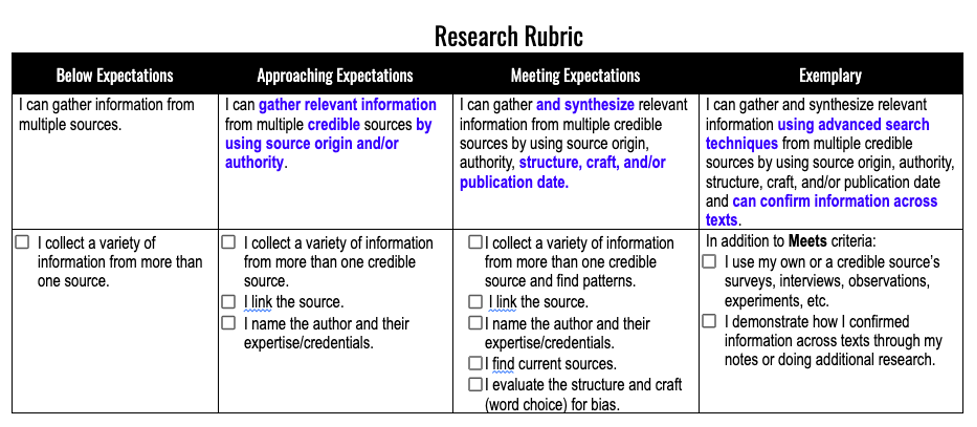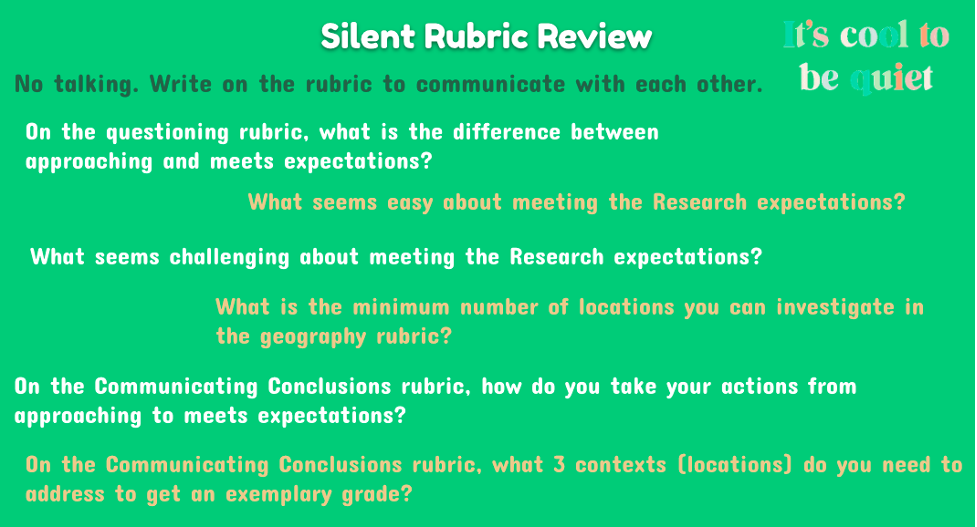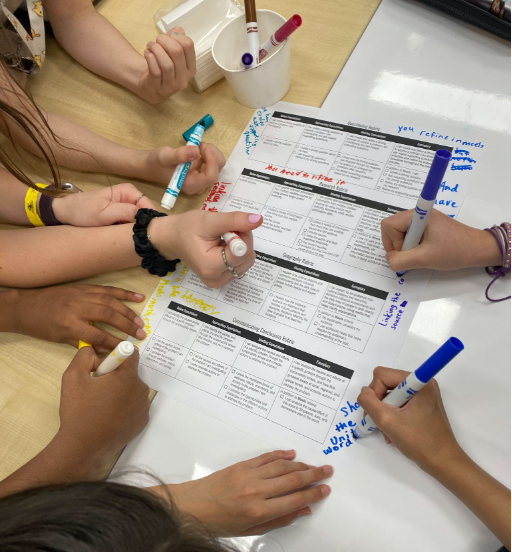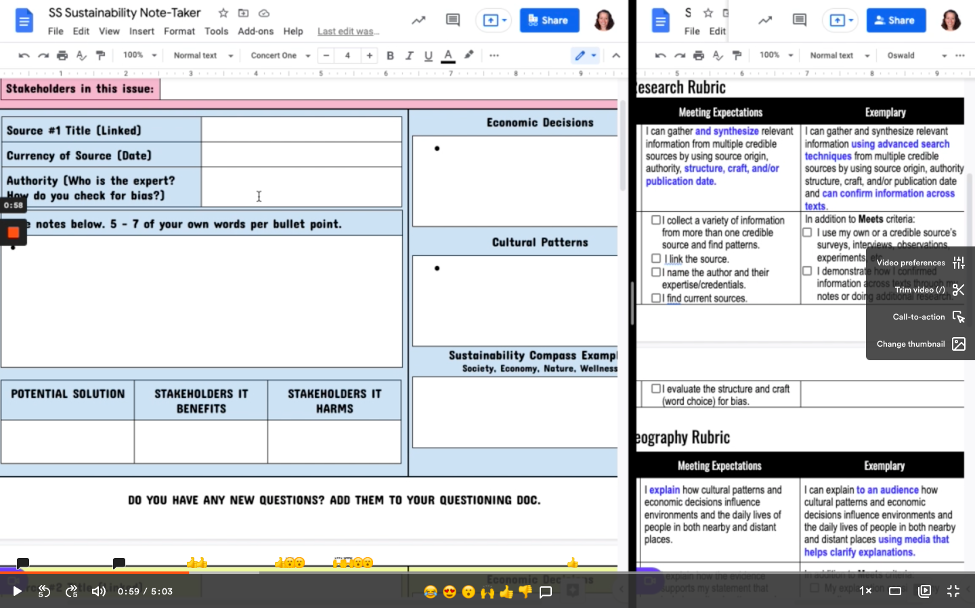Rubrics: 5 Go-to Ways to Engage Students
A MiddleWeb Blog

Unfortunately, students don’t always use them – or glaze over when we review them. How can we make a rubric review a more useful tool and experience for students?
Add Checklists
One change that my PLC and I have done is to create a checklist for students under each rubric descriptor. This checklist is written in student-friendly language and can be physically checked off.
By collaborating with the other social studies teachers, my colleagues and I are ensuring that the expectations are the same for all the students in the grade.
Before students turn in their work, they use the checkboxes to score their own work. In my experience, this tool makes it easier for students to see what they can do to bring their work up to the next level.
Explain Their Thinking
If you want to add more reflection into your rubric, include a narrative box under the descriptors asking students to explain why they think they should be graded this way. Encourage students to use it as a way to brag about all the beautiful work they have done and highlight things they don’t want you to miss.
During my time as an ELA teacher, I found this narrative so helpful because it demonstrated the students’ understanding of craft and the intention behind their writing. In any content area it can be illuminating to help understand misconceptions and student-identified achievements.
Mark it Up
Before students get to work on an assignment, we want to make sure that they have engaged with the rubric and understand its requirements. One way to do this is to ask students to have a “silent conversation” around the rubric (pictured below). The rubric was blown up on big paper and each student in a table group chose a different colored marker.
Then they read through and took notes for understanding, as well as answered specific questions about aspects of the rubric that I wanted to highlight. The silence encouraged them to interact with the rubric in a more hands-on way. I hung several of the more informative rubric annotations up to serve as a model.
After students explore the rubric, these questions guide their silent conversation.
Students have a silent conversation around the rubric’s requirements.
Show the Importance
When assigning work that can be explicitly linked to the rubric, it helps to make a video that outlines exactly where each part of the assignment matches the rubric. This helps students understand why they are doing the various tasks, and it also gives them a way to improve their grade after their self-assessment.
If they discover that they don’t meet expectations in a standard, they can watch the video to find where they can improve. I find that using videos saves my voice, makes it easy for absent students to catch up, and helps parents understand where grades come from.
A screenshot of my video explaining how the assignment matches the rubric.
Make Them the Teacher
When the class is fairly close to the end of the unit, it can help to refresh students’ memories of the rubric. One way to do this is to have them practice grading a similar assignment. I’ll take a few pieces of student work from the previous year and change them to be about a different topic. If you try this, ask students to grade the work while you do the same.
Want to make it more engaging? Hang the assignments up around the room and give students clipboards to work on. The fun comes when they compare their grading to yours; I find that they always grade more harshly than I do. This activity reminds them of the rubric requirements and can expose them to a variety of different ideas they might want to incorporate in their work while there is still time.
The more students interact with the rubric, the more ownership they take over it. Once they feel empowered by the rubric, they can use it as a tool to accomplish their goals rather than a means of judgment. It puts students and teachers on the same team, working together to accomplish great things.


































